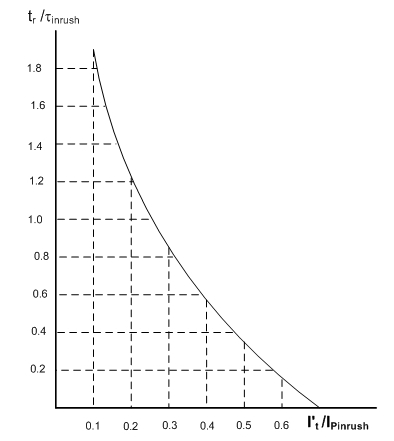Electricity Production Via Daily Water Flow in Building
Introduction
Our group has selected the Water Faucet Micro-Generator project in order to utilize knowledge
and experience obtained from different power engineering classes. The most difficult part of the project will
be synchronizing the speed at which we can spin the turbine with the optimal
speed of the motor/generator. We may
need to boost the signal from the motor in order to obtain our goals. This
project will be exciting because it will allow us to design and build a small
hydro-generation system. This system
will give insight into the complex task of finding a reliable energy source for
future use.
Objectives
The main goal for this project is to generate 220 V at 50 Hz
and up to 100 W of ac power for household use.
The goal of 100 W may be somewhat ambitious, as we will be limited by
the kinetic and potential energy of the water.
When water strikes the turbine, after being pressurized, the motor will
act as a generator to provide power.
This project is intended to function as a backup power supply in the
case of an emergency loss of power.
Benefits of the Water
Faucet Micro-Generator to the end customer:
·
Emergency backup power supply
·
Non-polluting generation for operation in
enclosed areas
·
Readily available supply of fuel (water)
·
Provides an alternative to gasoline-powered
generators
·
Save money by using water instead of gasoline
·
No flammable components
Product Features of
the Water Faucet Micro-Generator:
- Easy
hook up of faucet to hose
- Draining
of water will be provided
- Self-contained
water compartment for safe household use
- 2
outlets allowing multiple devices to be powered
- 220 V
at 50 Hz output
- 100 W
maximum load
Block Diagram
Water: The water is the driving force for the
turbine. It will be obtained through a
standard household faucet and transported to the turbine via a hose. The kinetic and potential energy from the
water will be transformed into rotational energy by the turbine.
Turbine: The turbine will be a plastic wheel with fins
based on the Pelton Wheel design. The
turbine will be enclosed in a box and attached to the motor shaft through the
center bore of the turbine. The water
will run through a nozzle and spray against the turbine to cause the turbine to
rotate and thus drive the motor shaft.
Motor/Generator: A permanent magnet dc motor will be used as a
generator. The turbine will turn the
shaft of the motor and alternating fields experienced by the rotor will induce
a current in the rotor windings thus transforming rotational energy into
electrical energy. The leads of the
motor will be connected to a dc-dc converter.
DC-DC Converter:
The input of the dc-dc converter will come from the leads of the motor. The voltage of the motor output will vary
with the speed of the motor and the speed of the motor will vary with the
pressure of the water. Thus, the dc-dc
converter will serve to stabilize the voltage in order to generate a constant
input voltage for the dc-ac stage of conversion.
DC-AC Inverter: The dc-ac inverter will take a constant dc
voltage as input from the dc-dc converter and generate 120 volts at 60 hertz
for the output. Since most household
electrical goods require 120 volt 60 hertz input, the same value would be the
most logical choice for the output of the inverter.
Circuit Breaker: Safety measures should be taken with all
electrical devices. A circuit breaker
will provide safety from short-circuiting the electrical outlet or the load. If the electrical outlet is shorted, the
breaker will trip and break the circuit thus preventing electric shock and
damage to generator components.
Electrical Outlet: A standard electrical outlet will be attached
to the circuit breaker for easy hookup to household products.
Performance: 120 +- 5% output voltage at 60 hertz, 100
Watt maximum power output
1.1 Design Block Diagram
1.2 Subprojects
The Rainfall Powered Battery Charger is
divided into 3 distinct subprojects: water
collection, mechanical devices, and electrical devices.
Water
Collection – consists of 2 plastic 10’ residential gutters, connected in
series with a gutter coupler. These gutters are attached to the outside of a
building (i.e. a fire-escape). For testing purposes, a hose connected to a
calibrated faucet is the source of water, simulating water rainfall during a
rainy day.
Mechanical
Devices – consists of the turbine, the gear and the motor. The turbine is
constructed from an ordinary bicycle wheel, and PVC caps that are implemented
as propeller blades. A shaft and a gear box bridge the turbine and the motor
together. The gear ratio is determined by the rated speed of the motor and the
average spinning speed of the turbine. The motor is a Permanent Magnet DC motor
capable of generating upwards of 30 Watts at low torque.
Electrical
Devices – consists of the DC to DC converter and the battery. The DC
converter transforms the unsteady input DC voltage to a constant 12V DC output.
It is powered from the input voltage, but uses minimal power for its operation.
The converter charges a lead acid battery that provides up to 36 Watt-Hours of
power.





This was a really great contest and hopefully I can attend the next one. It was alot of fun and I really enjoyed myself..
ReplyDeletea course in miracles
Thank you so much to share such an amazing and informative article. Keep us updating with more interesting articles. Also, visit at micro hydroelectric generator .
ReplyDelete